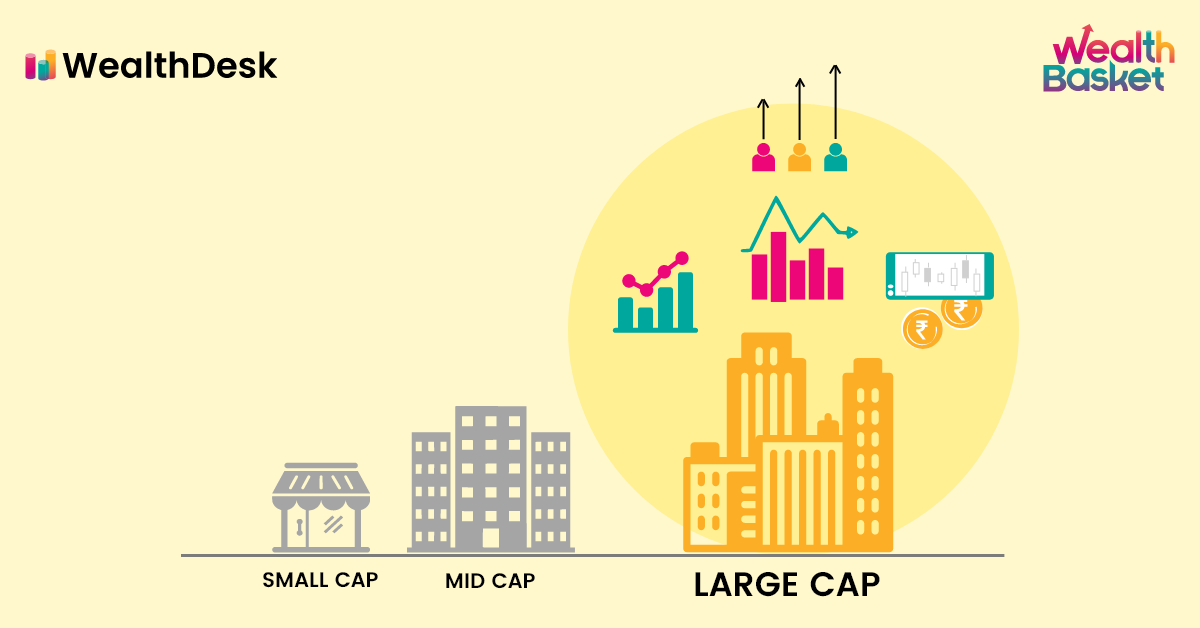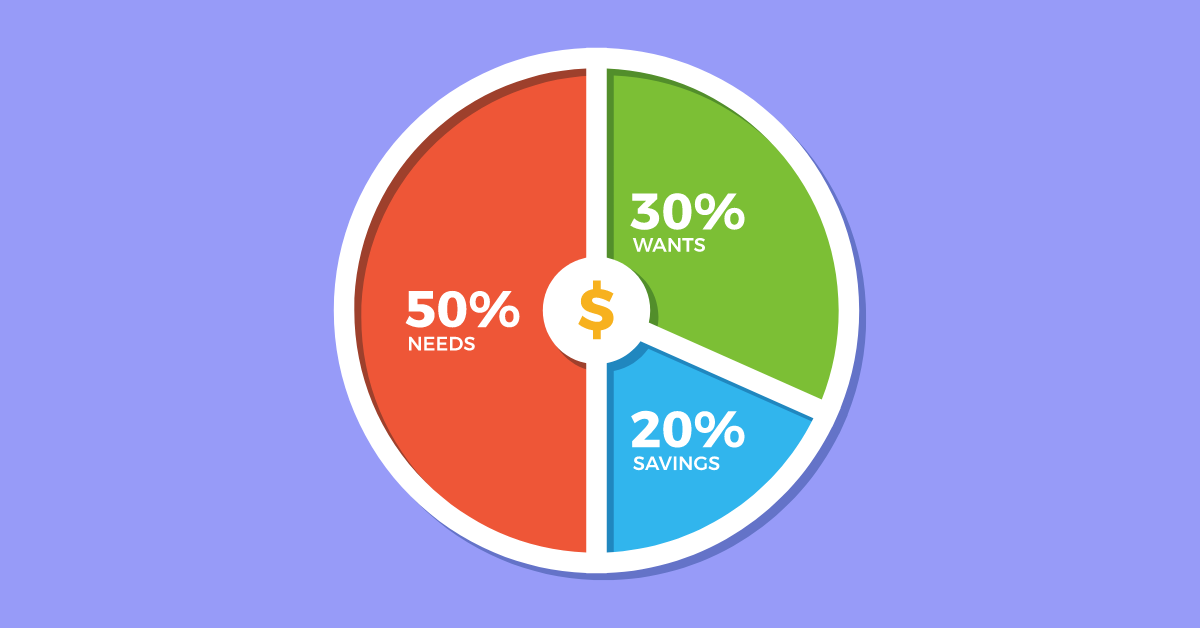Everything has a hierarchy to it. A Starbucks coffee has tall, grande, and venti. A popcorn tub at PVR has small, medium, and large sizes. Hierarchies are defined by specific characteristics. Hierarchy helps people to make decisions.
We have to make decisions everywhere, and even in the stock market while investing. The market regulators have eased our decision-making process for investing by categorising companies in multiple hierarchies based on different characteristics. One such characteristic is market capitalisation. The stock market has large cap stocks, mid-cap, and small-cap stocks.
This article will guide you on large-cap stocks, the benefits, various problems of investing in large-cap stocks, and how you can invest in large-cap stocks in India.
What Is A Large-Cap Stock?
The term ‘cap,’ in large-cap, stands for market capitalisation. Market capitalisation denotes a company’s value, computed by multiplying its total outstanding shares by its current stock price. All the companies listed on the stock exchange are ranked according to their market capitalisation.
As defined by the Securities and Exchange Board of India (SEBI), large-cap stocks are the stocks of the top 100 companies in terms of full market capitalisation.
Advantages Of Investing In Large-Cap Stocks
The advantages of investing in large-cap stocks are as below.
- Higher Investment Safety & Stability
Large-cap stocks are considered safer and more stable than other stocks as they generally tend to be well-established companies. Therefore they are less likely to collapse, with a financial crunch in the market, compared to mid-cap and small-cap companies.
In other words, large-cap companies are more able to face a market slowdown. Therefore, investing in large-cap stocks might help you have a relatively stable portfolio.
- Easy accessibility to Financial Information
The companies in mid-cap and small-cap stocks may or may not have been in business for a long period. Investors can access their financial information from their listing date, which can be a shorter period. It can make the performance comparison less efficient.
However, large-cap companies often have a long history. Therefore, investors can access and compare the companies’ financial performance over the long run. You can quickly obtain the operational and profitability details as all public companies’ details are available online.
- Dividend Payments
The total return from a stock consists of two parts, dividends, and capital appreciation. The small-cap and mid-cap companies may not pay dividends regularly as they need to reinvest their profits for survival and expansion.
However, large-cap companies are usually well-established with their long-term presence in the market. Rather than reinvesting all their profits, they generally consider dividing it among their shareholders as dividends. Therefore, investors looking for regular income from investment can consider investing in large-cap stocks in India.
Also Read: Understanding the Different Types of Sectors in the Stock Market
Disadvantages of Large-Cap Stocks
Though large-cap stocks seem nice at first sight, they have a negative side, too.
- Requires substantial capital to buy large-cap stocks
The large-cap stocks are generally high-priced. The reason is they have already proved their potential with strong past performance. Plus, these stocks usually have higher demand, and higher demand leads to higher prices. Investors with lower investable income may not be able to purchase a significant portion of large-cap stocks.
- Lower potential for capital appreciation
Large-cap stocks are companies that have reached their maturity and thus grow steadily. In comparison, mid-cap or small-cap companies have a large room for growth. Steady growth results in a stable share price rise and doesn’t guarantee growth. Thus, the potential for capital appreciation is generally less in large-cap companies.
- Do not guarantee wealth
When most investors rely significantly on the market cap as the only parameter of stock performance, it does not guarantee good performance. Market capitalisation is not the only factor in evaluating the stock; it is one of the factors. You shall also consider other factors such as quality management quality, intrinsic value, volatility, etc.
How Can You Invest In Large-Cap Stocks In India?
- Direct equity investment: One of the ways to invest in large-cap stocks in India is by finding the top 100 companies according to market capitalisation and investing in stocks of your choice.
- Index funds: Another way to consider is to invest in a large-cap index such as Nifty 50, Nifty 100, and Nifty Next 50 through index funds. Here your portfolio will have a weightage of stocks according to the weightage of large-cap stocks in the index.
- Exchange-traded funds (ETFs): There are large-cap exchange-traded funds (ETFs), similar to large-cap index funds, which are traded on the stock exchange like stocks.
- Actively managed funds: You can also invest in large-cap stocks in India through large-cap mutual funds, which provide investors with diversified portfolios.
Final Thoughts
Large-cap stocks are the top hundred listed stocks with the highest market capitalisation. While no investment is entirely safe, large-cap stocks are considered relatively stable. Usually, they pay dividends regularly. Though, the room for capital appreciation is lower in these stocks.
Investors looking for higher returns with lower investment amounts may not consider large-cap stocks a good investment option. Those investors who want to have stability in their portfolios may invest in large-cap stocks. You can invest directly in large-cap stocks or invest through exchange-traded funds (ETFs), index funds, or large-cap mutual funds.
WealthDesk brings you an opportunity to invest in WealthBaskets. WealthBaskets are combinations of stocks and ETFs indicating ideas, themes, and investment strategies. WealthBaskets are created and monitored by SEBI registered professionals.
FAQs
According to SEBI, there were 100 listed stocks categorised as large-cap stocks in India as of December 31, 2021.
It depends upon your risk appetite. If you desire a stable portfolio, you can consider investing a significant part of your capital in large-cap stocks.
Stock investing naturally involves a risk element. However, large-cap stocks are considered less risky than mid-cap and small-cap stocks.
No stock can guarantee the safety of the investment. Though, large-cap stocks are considered safer than mid-cap and small-cap stocks.
Blue-chip stocks are the stocks of those well-known companies which have already proved their potential with sound past performance. Blue-chip stocks tend to have a large market capitalisation and healthy creditworthiness compared to other stocks.


















